How does one combine the love for presentations, MOOCs and durians in a single week? If not in less than 48 hours?
Last week I had to overcome 2 challenges, first was to figure out how to present 50 slides in 10 minutes. To present a 9-month work in 10 minutes was not an easy feat, as it’s much easier to speak for a longer duration. The second one, came a day earlier, was where to hunt for Penang durians, off-season. To fulfil a request of my friend and colleague from Sarawak. Towards the end of the blog post, you find tips on strategic presentation delivery.
Let me tell you the story of the first challenge – how to present 50 slides in 10 minutes.
By flashing a slide for 20 seconds while talking? A PechaKucha presentation style? Or just like a Petronas Raya advertisement? At least the advertisement is a moving picture that one would enjoy. It’s evocative and meaningful. However in an academic setting, it may be a little difficult… yet I believe one can be strategic about presenting 50 slides in 10 minutes.
This happened recently when I was invited to give a talk on MOOC at a plenary session at 4th KANITA International Conference on Gender Studies (KICGS) 2018. The ‘Special MOOC Panel on Women’s Empowerment through Technology’ session is one of the dissemination activities of the COMPETEN-SEA MOOC project. This MOOC project is co-funded by ERASMUS+ programme under the European Union and has brought together experts from various backgrounds.
The way we work so far, it feels like a transdisciplinary project than a multidisciplinary one.
Very interesting project indeed.
COMPETEN-SEA MOOC Panel@KICGS2018
When it came to our session, Dr. Radziah Adam, the moderator, had a difficult task in hand. Thirty minutes behind schedule. And before lunch time. But Dr Radziah managed to the task well 😉
At the session, the first speaker Assoc. Prof. Dr. Marita gave a brief introduction of the COMPETEN-SEA (C-SEA) projects in the Philippines, Indonesia and Malaysia. Then she narrowed it down to the Philippines’ MOOC developed for the rural health workers in the Pangasinan area.
The second speaker, Assoc. Prof. Dr. Hafizah Selamat talked about the profiles of single mothers in Penang with several definitions of “single mothers” used by government agencies. Apparently, definitions help some single mothers; unfortunately exclude others who hardly fall under a definition.
The third speaker was Assoc. Prof. Dr. Poline Bala. She is a Kelabit, and she mentioned about their effort in bringing technology to remote communities citing for example, the successful eBario project. The case in point in her talk was about single mothers in Bario and Ba Kelalan. That, one of their aspirations is to become teachers and pass on their knowledge to the younger generations.
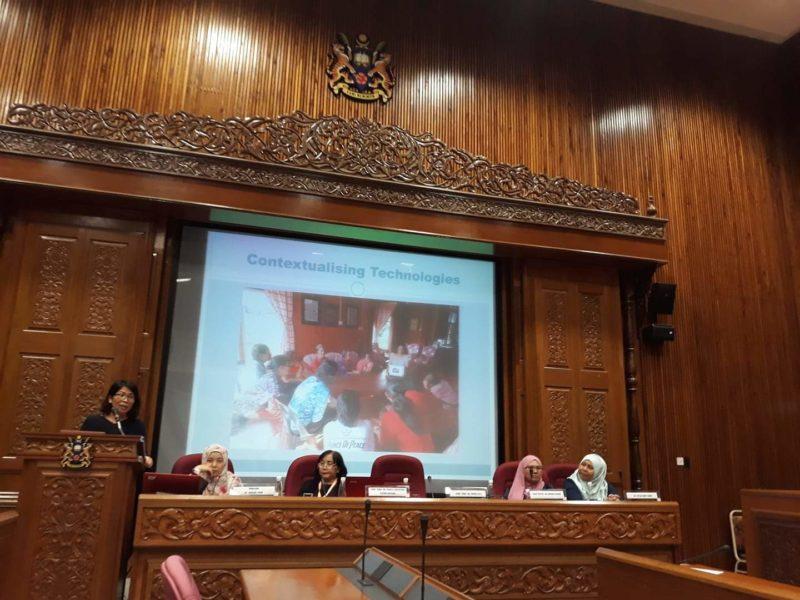
at Dewan Persidangan Universiti, Universiti Sains Malaysia
Photo credit: Prof. Noraida Endut, KANITA@USM
It was around 1.10 pm when the third speaker ended her talk. My turn came.
“It’s Lunchtime!” flashing on the audience’s minds. Okayyy… I could see some members of the audience were looking for the time, eyes searching for a wall clock or quickly looked at their watches and phones.
I felt the need to acknowledge it by saying, “As the last speaker, I am under a time-pressure. And I knew it’s lunchtime”. But then, as soon as I said that I realised, that put more pressure on me! 😳
Presenting 50 slides in 10 minutes?
Often in a conference or a symposium, the time given for a panelist or speaker is 15+5 minutes. Fifteen minutes for a presentation and 5 minutes for Q&A. Or 20 minutes with 5 minutes of Q&A at the end of a session–questions directed to all panel members. At this session, it was decided 10 minutes.
So for a 10 minute presentation, presenting a slide for 20 seconds seems not unlike a PechaKucha. It’s 20 slides for 20 seconds. Its tagline “The art of concise presentations”.
Only that mine had 50 slides. Can a presentation be more concise than a PechaKucha? 😉
I realised the need to treat this like a PechaKucha presentation style–and modified it, impromptu, to:
1) meet the given time,
2) suit the audience, and
3) what I want them to remember.
So I started by saying that I was going to give them a visual tour of the project. Of my role in the design and development a MOOC between Universiti Sains Malaysia (USM) and Universiti Malaysia Sarawak (UNIMAS). The title of my talk is “Learning from MOOCs: Reflective journeys into developing an inter-institutional MOOC that empowers single mothers in Malaysia”.
Anatomy of 50-in-10 Slide Deck
In the manner of my earlier blog post on ‘Anatomy of a Slide Deck‘, snippets of my talks are as follows (after greetings and intro slides):
Slide 4: I’m not a social scientist. I’m not anthrolopologist like my esteemed colleagues in the panel.
Slide 4 and 5: As USM MOOC Manager, my role is connecting the dots between people and ideas. I’m a chemist and a trained pharmacist. At some point in this project, I was reading a Masters thesis on Anticancer agents and an anthropology text on Kelabit. [20 seconds]
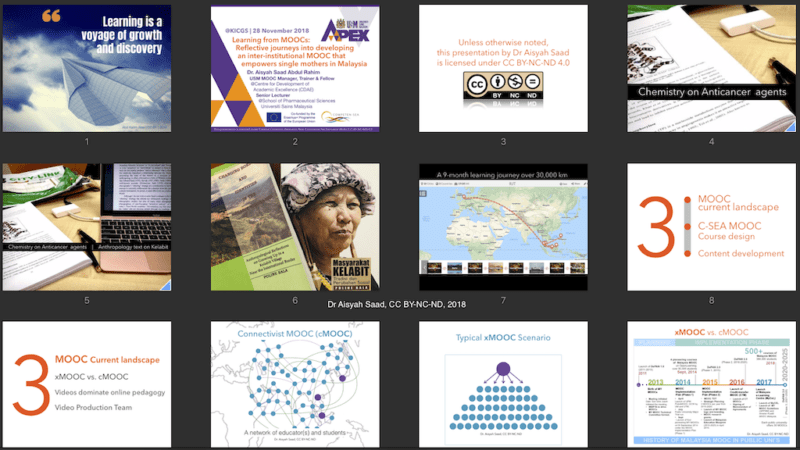
Slide 6: It’s a 9-month journey of over 30,000 km. Reflective journeys to Manila. Pangasinan. Miri. Bario. Delft. Kuching. Kota Bahru. Co-ordinating the design and development of an inter-institutional MOOC between USM and UNIMAS. Earlier in the USM MOOC projects, working with Dr Radziah, we conducted MOOC workshops in USM campuses, in Bertam and Kota Bahru. [30 seconds]
Three takeaways for the audience
Slide 7: This talk will touch on 3 things MOOC: Current landscape, Design and Content development. [5 seconds]
Slides 8-14: introduce 3 highlights from the huge MOOC landscape. The xMOOCs vs. cMOOCs. The national MOOC agenda in Malaysia and I continued with types of MOOC videos out there, citing a research by Alexander von Humboldt Institute for Internet and Society (HIIG). [1 minute]
Slides 15-19: touched on the gaps in the MOOC landscape. There are few partnership in the development of MOOCs and yet fewer developed for marginalised people. Thus, this C-SEA project in Malaysia seeks to address and narrow those gaps in offering access to entrepreneurial skills that empower single mothers, independent of time and distance, in starting their own home business. I also mentioned our site visit to Bario. [1 minute]
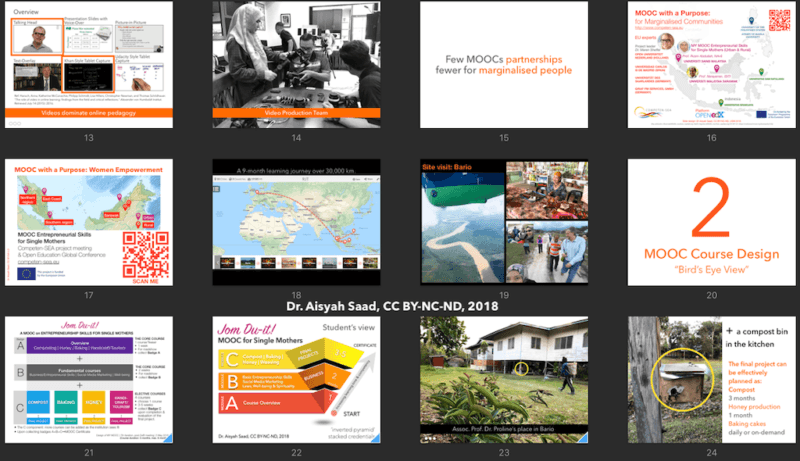
MY C-SEA MOOC Course Design
Slides 20-25: I spent a bit longer here. Perhaps about 3 minutes to explain the ‘inverted pyramid’ course design especially on the student’s learning time. The house-like structure (slide 21) was explained earlier, in detailed, by Dr Hafizah.
Thus, there was no need for me to review it further, except to say that no one can tell how long one resides in a house by looking at its structure. So the inverted pyramid was introduced to give another perspective, a visualisation of the students’ learning time and perhaps competencies which are recognised by credentials and get stacked up (Slide 22). Module C is where learners can select an elective project or even 2-3, as inspired by Dr Poline’s place in Bario (Slides 23-24) during our site visit. [3 minutes]
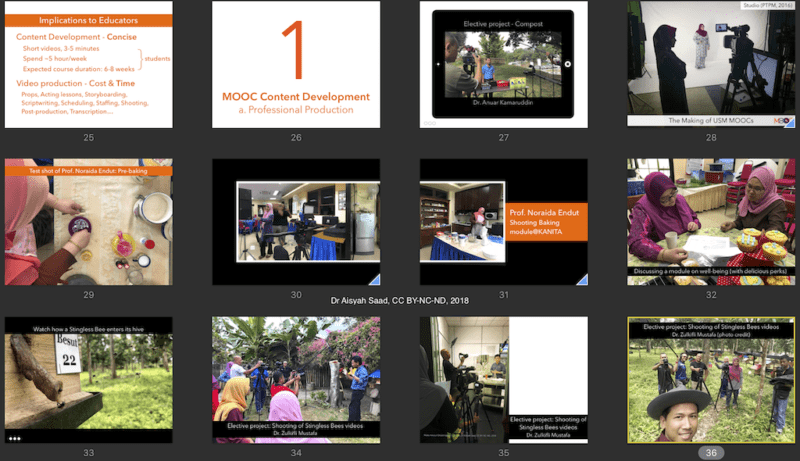
At this point, it’s a little more than half-way through the 10-minute talk.
MOOC Video Production
Slides 26-36: I breezed through these slides under 2 minutes. It had 2 short videos (less than 20 seconds). The audience was taken through the various professional video production settings. Here you can see educators at their best, going beyond the four walls, beyond the lecture halls. From a compost ‘farm’, to a simple kitchen setup in KANITA (baking) to stingless honey production (labs-to-farm). [1.5 minutes]

Slides 37-45: DIY video production for MOOC content development. This is where I really slowed down. DIY video production is not easy… particularly for an introvert educator. Putting myself out there in public platforms takes a lot of courage. Slides 39-42, I talked briefly about my own journey in confronting my own insecurities with voice, face and technology. With that experience in hand, I started helping other educators facing similar issues. I ended the talk with Dr Hafizah’s video, then thanking ERASMUS+ funding to making collaboration and partnership possible (Slide 45-46); with some conclusions from the project so far. [~2 minutes]
From classroom to online teaching
Videos seem to dominate the online pedagogy. Educators who plan to transition from conventional to online teaching – it’s an erroneous thinking that it’s going to be a straight-forward journey. That technical support will be there for you. That one can simple shoot a video with an iPad, and upload straight to youtube.
Unlike giving a live lecture.
Instead, success with DIY video production will take time. There are hills to climb, though not as steep as 5 years ago. There will be many attempts and failures. There will be pitstops along the hills for you to contemplate and re-think of the DIY pre- and post-production work.
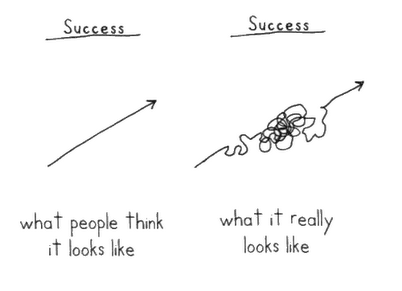
And plenty to learn and upgrade one’s competencies dealing with technology, not just in DIY video production but also in feeling comfortable speaking to no one; just to a camera. This was one of the first issues I had to confront and learned how not to look boring.
But I was lucky* – that my 1-hour workshop with Dr Hafizah and her team – brought about many very happy outcomes for KANITA under this project. They’ve recorded many short videos. The video of Dr Hafizah and a single mother, the one I shared in my talk shows good lighting and great audio in a kitchen. Dr Hafizah looked like a host from NONA TV programme, I overheard from an audience member.
According to Dr Hafizah, they used an iPhone, a lapel microphone and some table lamps bought from Tesco. Quite competent DIY video production team. In a space of 2 months and less.
A fantastic example of women empowerment with technology, where creativity flourishes under constraints with technology as an enabler.
After the talk, Assoc. Prof. Dr. Poline noted (or something to this effect), it’s interesting to see how the talks strung well together by all panelists, despite the lack of a pre-discussion. Dr Marita introduced the project and talked about the Philippines’ rural health workers, Dr Hafizah on Malaysia’s single mothers with a focus on urban single mothers (Penang) followed by the rural single mothers (Bario and Ba Kelalan) by Dr Poline and lastly, on the MOOC design and development by yours truly.
Later, Dr Radziah came up and said, I managed to deliver mine within 10 minutes. Yeay!
Tips on Strategic Presentation Delivery

Upon reflection on this event, I would like to share several tips in helping you becoming more intentional and strategic in delivering your presentations:
- Less is more. Identify 3 takeaways for your audience and work from there to plan your awesome talk.
- Under time constraint, consider giving your audience a visual tour of a project or a research, after identifying the 3 key points you want your audience to remember.
- Do a power pause at each point. This helps your audience to remember your points. The former US President Barack Obama is the master of the pause.
- On each takeaway for your audience, consider slowing down at these points to emphasis the points or stories that you wish to impart. Spend a longer time to draw your audience attention to the details of an important takeaway.
- In short, sometimes you go fast; at important points you go slow. Mix them up to make your presentation interesting.
- Consider presenting with images rather than text. Text takes longer to read, whereas…
A picture is worth 1,000 words
Extracurricular activity | In search of durians, off-season
The afternoon before our talk, Dr Poline and I decided to go and look for Penang durians. Dr Poline is from Sarawak.
And somehow Dr Poline’s friends advised her to find one while she’s in Penang. Interestingly, not the famous Penang Char Keow Teow or TeoChew cendol or Nasi Kandar… Hmm…
When Dr Radziah and I were in Bario, she treated us to some Bario durians, from hundred-year old durian trees. And not forgetting, Bario-style Maggi Mee, perhaps the healthiest-tasting Maggi Mee in the world? 😀 Hunt for these when you’re in Bario.
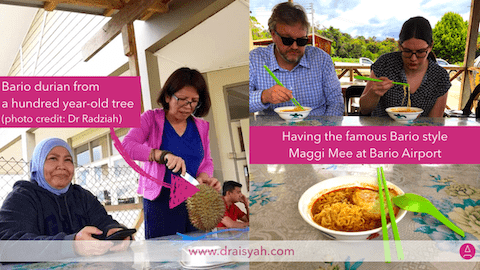
So off we went hunting for Penang durian, off-season.
A tall order honestly, but thanks to my Georgian friends (you know who you are! :-)), we managed to find good ones. We also went on a durian or rather fruit trail around the Penang Island.

Having a Black Thorn durian, RM75/kilo! 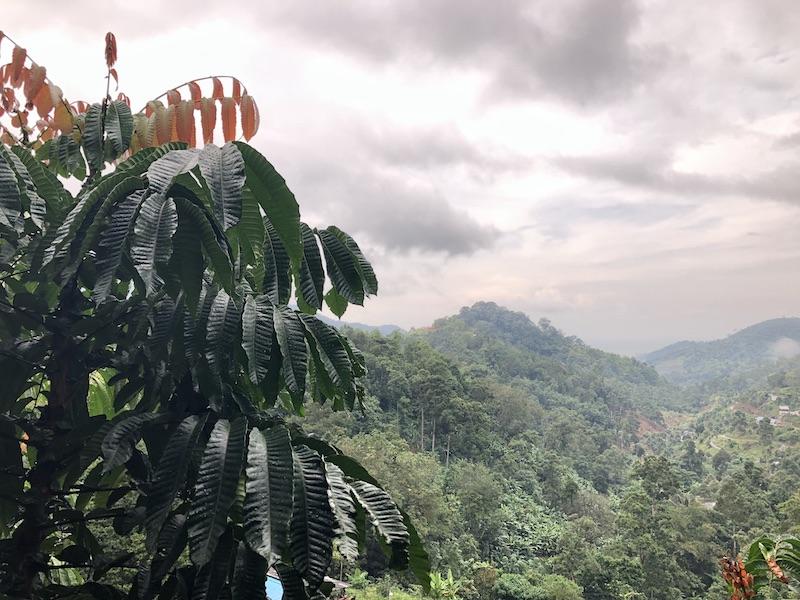
A view from Tropical Fruit Farm
We found out from another durian seller in Balik Pulau that there are over 100 durian varieties, of which 30+ can be found in Penang. By the way, Penang durians are super-delicious – so don’t miss it when you’re in Penang.
All in all, I had a great (and fruit~full) time with Poline, and the next day at the 4th KICGS as a plenary speaker. I remember the last thing I said to the audience, in response to a question about the cost of video production,
It doesn’t matter what kind of (smart)phones you have. The power is in your hand (while showing my smartphone to the audience), let’s use it to spread the Light.
And as an educator, I shall end this post with my favourite quote from Rumi:
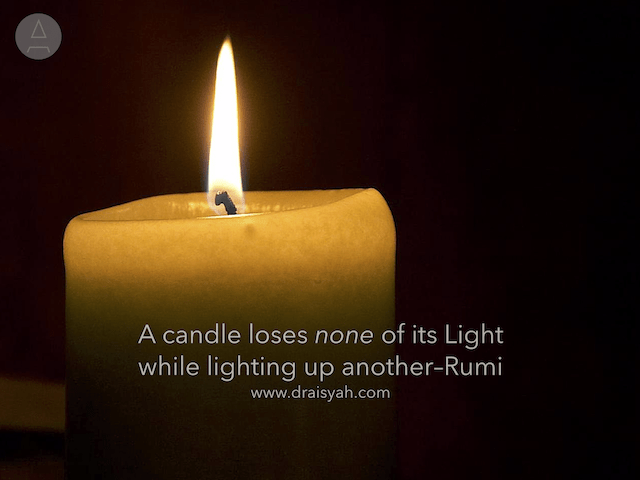
Be the light.
*Note: Out of the many workshops of teaching with technology or on presentations I did over the last 4-5 years, few returned and shared the outcomes of their learning from the workshops. I often wonder, what’s the impact of the workshops on their teaching? Honestly, many came for the CPD points. Many more “lost their way” when they went back to their respective schools. There should be a way (a portfolio? a colloquium?) to track the workshop outcomes for educators, as we like to do for our students 😉

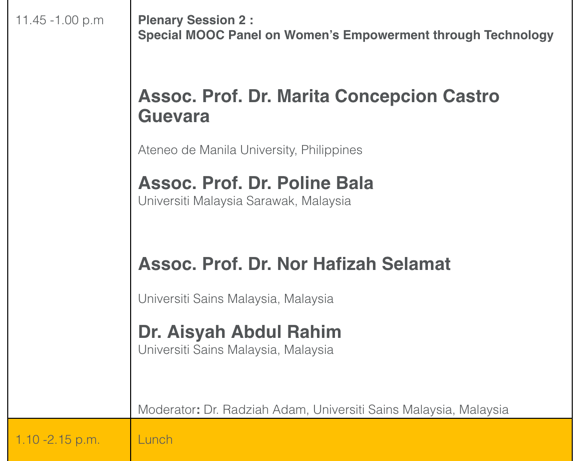


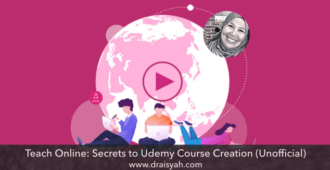
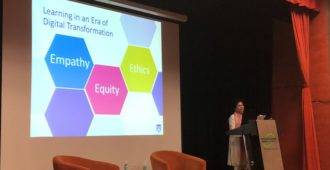

Comments are closed.